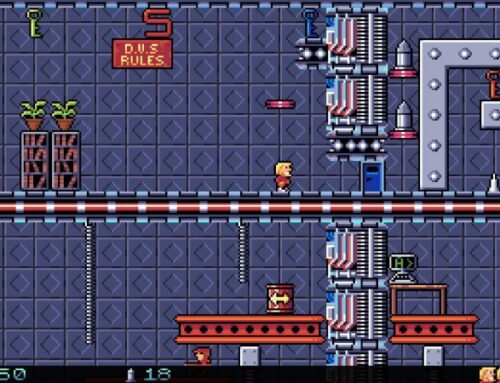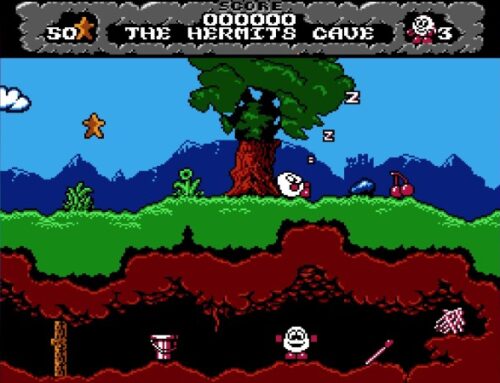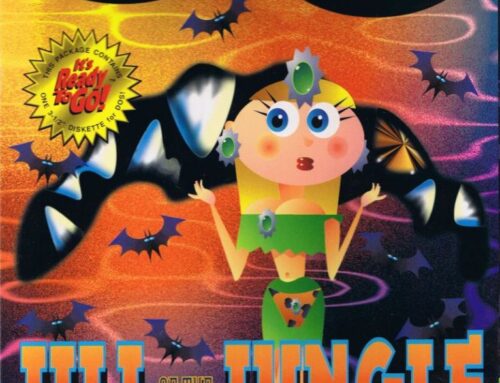
We’re not all grizzled retro gaming veterans — some of us are new to the hobby. So our Getting Into Retro Gaming guides are here to help you get up and running as soon as possible — and ponder some common thoughts you might have on your own personal journey.
Here is a question at the very heart of retro gaming as a hobby: why would you play an old game when there are newer games out there doing the same thing, but better?
This question has been on my mind this week as I’ve been revisiting the rereleased MicroProse flight simulators that recently showed up on Steam; it’s particularly relevant to the exceedingly venerable and crusty Solo Flight, but it still has some relevance to slightly more recent games like Dogfight. Given that Microsoft Flight Simulator exists — and assuming you have a setup where it won’t melt your graphics card and/or processor — why would you bother playing a flight sim from the world of retro gaming?

I couldn’t come up with an immediate answer. Microsoft Flight Simulator is, without a doubt, almost infinitely superior to Solo Flight in every single way. Graphics? Better. Sound? Better. Map size? Better. Aircraft on offer? Better. Flight model accuracy? Better.
You get the idea; the only area where I’d argue that Solo Flight genuinely has Microsoft Flight Simulator beat is in the fact it features a structured game-like component; Microsoft Flight Simulator has stuff like its long-distance bush flights and landing challenges, but nothing quite like Solo Flight’s Mail Pilot mode. But that’s surely not enough to convince me to spend time with Solo Flight’s ugly-ass CGA retro gaming visuals over and above the near photorealism of Microsoft Flight Simulator, is it?
Well, no, but like I say, there isn’t an immediate and easy answer to this. Nostalgia will be a factor for some, though seemingly not in my case; although I grew up with a lot of MicroProse flight sims, my primary experience with them is in the 16-bit era, and so I never actually played Solo Flight until this week. And I don’t have much nostalgia for retro gaming with CGA graphics, either; at the point when CGA visuals were the norm in PC gaming, I was still playing games on the then-much more capable Atari 8-bit and Atari ST platforms, and I didn’t switch to MS-DOS and Windows gaming until 256-colour VGA was firmly established as the norm.

So what is it? Could it perhaps be the fact that, like most retro gaming experiences, Solo Flight’s relatively primitive nature makes it an easier and accessible title to engage with than Microsoft Flight Simulator? That’s part of it, for sure. To play Microsoft Flight Simulator effectively, I need to hook up my analogue joystick, bemoan the fact I don’t have a proper yoke or HOTAS setup, wait for ten minutes for the damn thing to load (longer if it’s got a 50GB update to download) and then remember how to operate what is essentially a real aircraft. In Solo Flight, meanwhile, I open the game, press 1, hold down the “+” key and I’m flying.
Old games are often fairly simplistic by necessity. The technology of the time wasn’t sufficient to do anything more complex, both mechanically and in terms of presentation. And, at the time, we were perfectly fine with that; we recognised that playing a game was not a reflection of reality, and that there would always have to be a certain amount of suspension of disbelief. But that didn’t stop these games being immersive; they could kick your imagination into overdrive, making you believe that more was going on than there actually was.
That immediacy is important. While Microsoft Flight Simulator’s latest version is much better at providing an introduction to flight for newcomers than its past incarnations have been, it’s still a dauntingly complex piece of software that some people will bounce off before they’ve even got a single aircraft into the sky. Solo Flight, meanwhile, asks very little of you — essentially, do you want to “just fly” or play the Mail Pilot game?

The same is true more broadly in retro gaming, too — in some genres more obviously than others. Take the first-person shooter genre, for example; personally speaking, I’d still much rather play Doom and Quake than any Call of Duty or Battlefield that’s been released in the last few years. Doom and Quake have that immediacy factor — as well as a willingness to stoke the fires of the imagination. Call of Duty offers a very prescriptive experience in its single-player modes — if they even do those any more — and a multiplayer mode that demands a significant commitment in order to become competitive at.
Of course, some people like the increased demands and added complexity of more modern games. And that is, of course, fine. But for me, specifically not having to worry about any of that is one of the core appeals of retro gaming.
Completely unrelated to all that, we have something that we’ve almost completely lost in modern gaming: the sense of retro gaming platforms being unique from one another.

Back in the ’80s and early ’90s, different platforms had markedly different capabilities from one another. They had different colour palettes, different resolutions, different graphics modes, different things that they could accomplish in hardware. And that meant that the same game could look and feel markedly different on different computers and consoles. In many cases, the “best” version from a technical perspective wasn’t necessarily the “best” version from a mechanical or gameplay perspective, either.
There’s an undeniable appeal to specifically embracing the immediately identifiable aesthetics of these different platforms — yes, even CGA’s rancid colour palettes — that is at the heart of retro gaming’s appeal. Sometimes you’re just in the mood for a SNES or Mega Drive game due to how it looks or sounds; sometimes you’re in the mood for a Spectrum game because of the genres that thrived on that platform; sometimes you’d rather play an Atari ST version of a game than the technically superior Amiga version because you grew up with the former and it is thus more familiar to you.
We don’t have that in modern gaming. Yes, the capabilities of today’s platforms allow for a wider variety of styles and aesthetics than ever before, but they’re just that: aesthetic and stylistic choices. There’s nothing that immediately identifies a game as being a PlayStation 4 or 5 game, an Xbox One or Series X game or a PC game. One could make an argument that Switch games are immediately identifiable for their obvious technical inferiority in multiplatform situations and/or the presence of first-party Nintendo games — but the fact remains that licensing and copyright issues aside, something like Super Mario Odyssey or Metroid Dread would comfortably run on any of today’s platforms.

Part of the appeal of retro gaming, then, is that by engaging with a particular game on a particular platform, you’re getting a distinct feel for not only that specific game, but also for the platform it was released on and the culture surrounding it.
Explore the library of the Intellivision and you’ll see a console constantly trying to get one up on its rival, the Atari 2600. Compare the libraries of the SNES and the Mega Drive and you’ll find different genres noticeably favoured on each platform. Explore ’80s home computers and you’ll doubtless run into the demoscene before long. Hell, play a CGA PC game, as much as I mock them, and you’ll see programmers doing their absolute best to work within exceedingly severe limitations!
This, to me, is what is interesting about retro gaming. There’s a constant sense of discovery among these old games and these classic platforms — and a lot of that sense of excitement is gone from modern gaming. We still get great games, of course, and there are still plenty of things worth being excited about — but generally speaking, we know what to expect. We know that Sony is good at making cinematic blockbusters; we know that Microsoft is good at racing games and shooters; we know that Nintendo is good at cartoonish whimsy.

But none of these things are surprises like seeing a polygonal 3D engine working on an Amstrad CPC, or a massive game crammed into a file size smaller than one of the images on this web page, or, indeed, a featureless, putrid turquoise and purple landscape somehow providing a compelling, enjoyable and exhilarating flying experience.
To put it another way, “better” in technical or design terms isn’t necessarily “better” from a simple perspective of personal enjoyment. It all depends on what you want to get out of the experience. When it comes to retro gaming, we all have our own personal goals and priorities. And it’s easier and more fun to explore those things than ever before!
Header image adapted from an image by Ruben de Rijcke — CC BY 3.0




